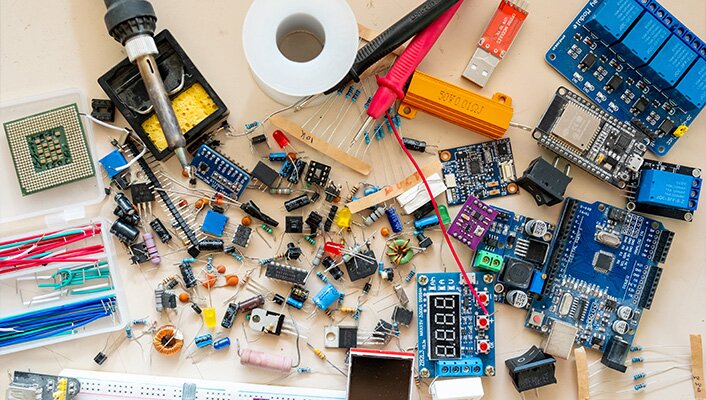
Electronic components are the basic building blocks of modern electronic equipment, and their performance and reliability directly affect the working effect of the entire system. Are the electronic components affected in the storage environment, and what is their long-term storage stability? This article will provide an in-depth look at the storage environment requirements for electronic components and explain why these requirements are so important.
Table of Contents
ToggleStorage Requirements for Electronic Components
Storage requirements for electronic components include the following:
- Temperature: Electronic components have higher requirements on temperature. Extreme temperature conditions can cause expansion or contraction of the materials inside the component, which in turn can affect the performance and reliability of the component. Generally, the recommended storage temperature range for electronic components is -40°C to 85°C.
- Humidity: Humidity is another important storage parameter for electronic components. A high humidity environment may lead to metal corrosion, moisture in the conductive layer, and degradation of insulating materials, thereby affecting the electrical and insulating properties of components. Typically, the recommended storage humidity range for electronic components is 30% to 70% relative humidity.
- Anti-static: Electrostatic discharge may cause damage to electronic components. Therefore, anti-static measures should be taken in the storage environment, such as using anti-static packaging materials, grounding, etc. , to protect components from static electricity.
Influence of Storage Environment on Electronic Components
An environment that does not meet the storage requirements for electronic components may have the following effects on components:
- Loss of Function: Excessively high or low temperatures may cause expansion or contraction of the materials inside electronic components, thereby affecting the normal operation of the components. Excessive humidity can lead to corrosion of metals and degradation of insulating materials, causing components to lose function.
- Performance Degradation: An unsuitable storage environment may cause the electrical performance of electronic components to degrade. For example, a high temperature environment may cause a change in the resistance of a component’s conductive or insulating layers, preventing the component from functioning properly or degrading its performance. Excessive humidity may dampen the conductive layer, increasing resistance or causing a short circuit. These effects can cause electronic components to fail to meet design requirements in practical applications, and even lead to system failure.
- Reduced Reliability: Unsatisfactory storage conditions may reduce the reliability of electronic components. Changes in temperature and humidity can cause aging, loosening or corrosion of the materials inside the component, shortening the life of the component. In practice, this can cause components to fail after a period of operation, requiring more frequent repairs or replacements.
- Data Loss or Leakage: An unsuitable storage environment may lead to data loss or leakage in data storage devices. For example, high temperatures can cause changes in the magnetization of data bits in the storage medium, making the data corrupt or unreadable. In addition, high humidity may cause corrosion of storage media, resulting in data loss or irrecoverability.
- Traceability Issues: Electronic components need to be properly identified and recorded during storage to ensure their traceability and quality control. An unsuitable storage environment may lead to blurred or damaged identification and records, making the source, status and reliability of components unclear, and making quality control and troubleshooting difficult.
Choosing a Certified Supplier
There is no doubt that the storage conditions of electronic components are important. We don’t want to spend money to buy problematic components, so how do we judge whether the components we buy are stored in a suitable environment?Choosing a supplier with ESD-S20.20 qualification can ensure the storage environment of the components and thus ensure the quality of the components. ESD-S20.20 is a certification by the Electrostatic Discharge Association of the United States. Whether it is the international top authorized distributor MOUSER, DIGIKEY, WIN SOURCE, the leading distributor in Asia, has passed the ESD-S20.20 (international anti-static standard) certification, and also passed the ISO 14001 environmental test certification, which makes the reliability more reassuring.
Conclusion
In general, electronic components have relatively high requirements on the storage environment. Factors such as temperature, humidity, dust protection and static electricity have a significant impact on the function, performance, reliability and data security of electronic components. An unsuitable storage environment may lead to loss of function, performance degradation, reduced reliability of electronic components during long-term storage, and even data loss or leakage. SMD Components are more sensitive to such unsuitable storage environment.
Therefore, in order to ensure the quality and reliability of electronic components, the storage environment should meet the relevant requirements of the components, and strictly abide by the relevant storage and storage regulations. This ensures that the electronic components will remain in good condition during storage.

COMMENTS